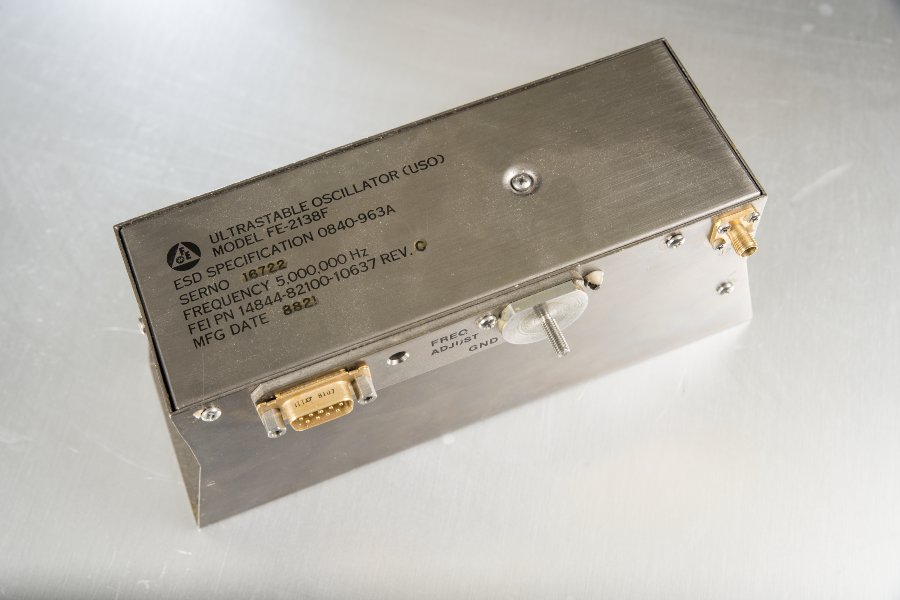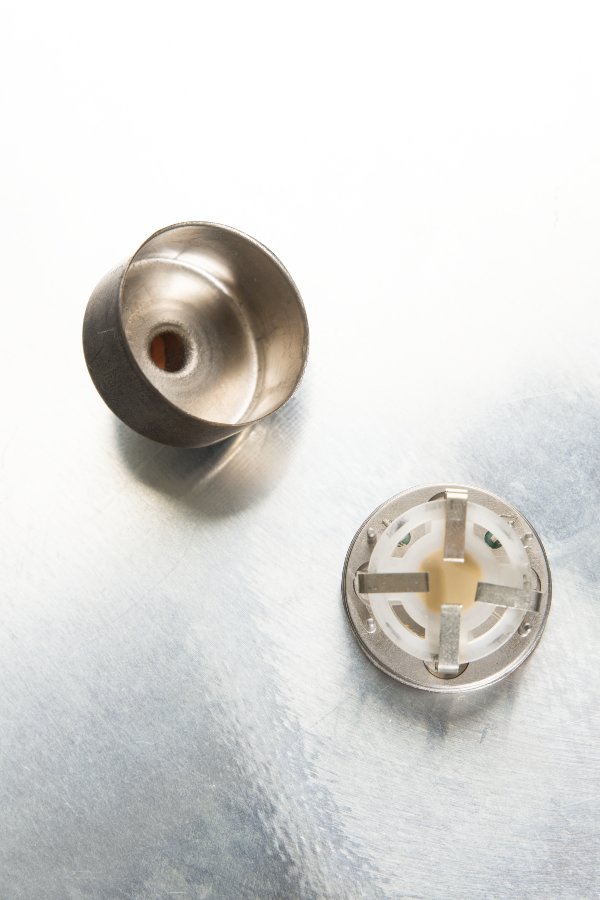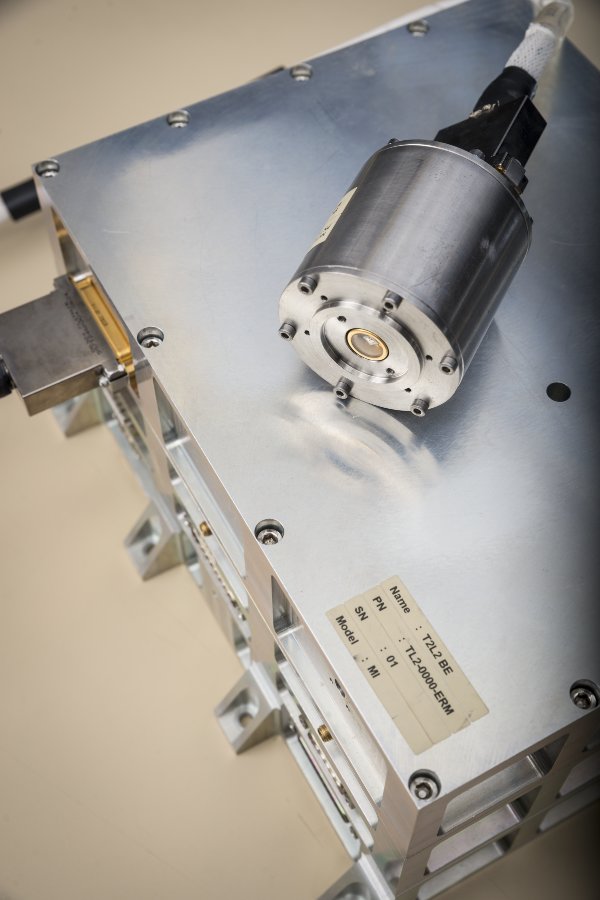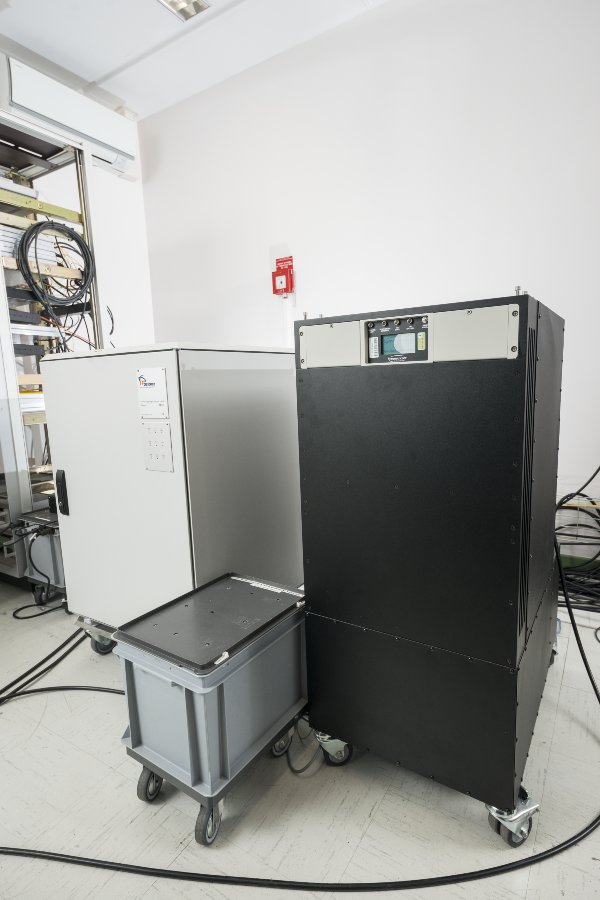Activities Time-Frequency:
Workforce: 5with: 4 permanents, 1 non-permanent
TOULOUSE, France
Founded in 1961, the Centre National d'Etudes Spatiales (CNES) is the government agency responsible for shaping and implementing France's space policy in Europe. Its task is to invent the space systems of the future, bring space technologies to maturity and guarantee France's independent access to space.
CNES T/F activities are mostly within the Radio-Frequencies sub-directorate (DSO/RF) and within the PHARAO/ACES project.
Within the Radio-Frequencies sub-directorate, T/F activities are focused on R&T (Research & Technology) and on the T/F lab. The aim of R&T activities is to develop next generation T/F sources and to improve T/F transfer techniques. The T/F lab is equipped with several references (3 AHMS, 8 high performance commercial Cesium Cs beam clocks, ultra-stable and/or ultra-low phase noise quartz crystal oscillators) and numerous test benches. The objective is to characterize T/F equipment for CNES projects and for R&T. An UTC(CNES) time scale is maintained since June 2016, in particular to monitor T/F performances of GNSS.
Concerning PHARAO, CNES is in charge of developing and integrating the clock (which is the main French contribution to ACES), in collaboration with LKB, SYRTE and several industrial partners.





Expertise :
- Oscillators
- RF and microwave oscillators and synthesis
- Piezoelectric technologies• Quartz-crystal frequency references (XO, VCXO, TCXO, OCXO, USO) dedicated to space payloads : technologies, manufacturing, environnemental sensitivities, performances
- MEMS technologies• Quartz-crystal reference back-up analysis
- Microwave technologies• MMIC VCO based on GaAs Gallium arsenide and SiGe Silicon-germanium
Fractional synthesis based on SiGe Silicon-germanium
Sapphire Al2O3 oscillators - Spintronic technologies• Quartz-crystal reference back-up analysis
- THz technologies, THz signal generation• Frequency synthesis dedicated to heterodyne receiver (JUICE)
- Optical oscillators, lasers
- WGM, gallery modes• Resonator technologies
Oscillator topologies
Noise modelling - Lasers locked to an atomic or molecular line• Telecom laser frequency locked on Rubidium Rb at 780 nm.
- Frequency combs• Frequency comb for the link to REFIMEVE+
- Laser sources• RIO laser diodes at 1560 nm and 1542 nm (linewidth ~ 5 kHz).
- WGM, gallery modes• Resonator technologies
- RF and microwave oscillators and synthesis
- Atomic references
- Micro-wave clocks and subsystems
- Cold atoms• Development and use of the PHARAO clock with SYRTE and industrial partners
- Thermal beam clocks• Use of commercial Cesium Cs clock
- Masers• Use of commercial Masers
- Micro-wave clocks and subsystems
- Synchronisation, frequency transfer and time scales
- Micro-wave links
- GNSS• GNSS code and phase time transfer, IPPP (Integer PPP), absolute and relative calibration of GNSS reception chains
- Optical links in free space
- Pulsed optical links in free space• The T2L2 experiment has been developed and then operated by CNES (as prime contractor for both the system and the instrument) in collaboration with the GeoAzur laboratory of the OCA.
- Time scales• Composite timescale UTC(CNES) based upon an AHM steered to an ensemble of Cesium Cs clocks.
- Micro-wave links
- Specific methods of time-frequency metrology
- Noise
- Phase noise, PLL• Several phase noise measurement test benches (up to 50 GHz)
Phase noise analysis of frequency sources and synthesis - Intensity noise• RIN measurement capability
- Phase noise, PLL• Several phase noise measurement test benches (up to 50 GHz)
- Systematics, Accuracy, Calibration
- Systematics in atom-light interaction• Evaluation of PHARAO clock systematics
- High resolution spetroscopy
- Atomic spectroscopy• Knowledge of spectroscopy on relevant transitions used in clocks (optical and microwave)
- Noise
- Techniques for time-frequency metrology and applications
- Electronics
- Analog electronics• Low-noise electronics and space grade components
- Digital electronics• Space grade components
- Acquisition, interfaces, converters• Space grade components
- Optics
- Control of the optical beam characteristics• Capabilities of measurements for optical power, its frequency, polarization and spatial mode.
- Cooling or trapping techniques
- Cooling, trapping of atoms• Development of laser source for cooling and manipulation of Rubidium Rb atoms.
- Interferometry techniques
- Atom interferometry techniques• Atom interferometry techniques, in particular for space missions
- Sensors
- Atomic inertial sensors• Analysis of inertial sensors for space missions
- Electronics
Connected Sectors:
- Positioning and navigation
- Satellite positioning, GNSS• CNES has a large expertise in satellite navigatiob. Its objective is to contribute to the success of Galileo and EGNOS. CNES has dedicated monitoring tools, a signal observatory, a time reference UTC(CNES), an independent network of stations and humans resources to analyze GNSS performances and coordinate results.
- Environment and health
- Geoscience (geodesy, geophysics)• Dedicated team at CNES